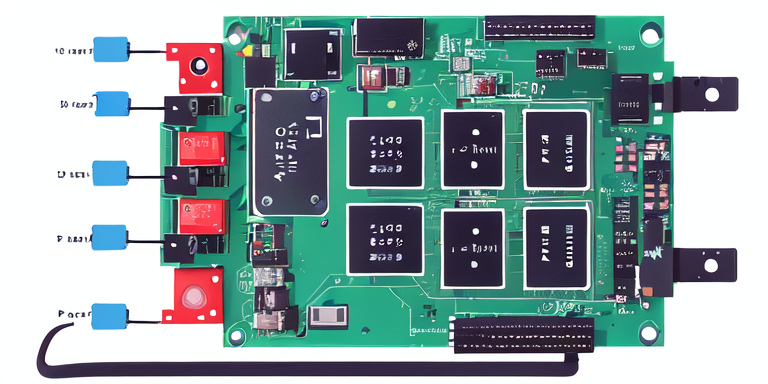Operating a 128x64 OLED LCD Display with Raspberry Pi
2015-08-17 00:19 (10 years ago)
ytyng


An impulse purchase from Amazon: a 128x64 OLED LCD display
http://www.amazon.co.jp/dp/B00XDY2SR8
Connecting it to a Raspberry PI via I2C and getting it to work.
SSD1306?
1. Enabling I2C on the Raspberry PI
$ sudo raspi-config
→ Advanced Options → I2C → Yes
After setting, restart the device
There are various methods depending on the model and the time period, so choose the one that suits your setup.
Reference: `Enabling I2C on recent Raspberry Pis - Rabbit Note <http://rabbit-note.com/2015/02/08/raspberry-pi-i2c-activation/>`_
Also, install i2c-tools
$ sudo apt-get install i2c-tools
2. Connect and Verify the LCD Display
2-1. Run i2cdetect with the display not connected
$ sudo i2cdetect -y 1
0 1 2 3 4 5 6 7 8 9 a b c d e f
00: -- -- -- -- -- -- -- -- -- -- -- -- --
10: -- -- -- -- -- -- -- -- -- -- -- UU -- -- -- --
20: -- -- -- -- -- -- -- -- -- -- -- -- -- -- -- --
30: -- -- -- -- -- -- -- -- -- -- -- UU -- -- -- --
40: -- -- -- -- -- -- -- -- -- -- -- -- -- -- -- --
50: -- -- -- -- -- -- -- -- -- -- -- -- -- -- -- --
60: -- -- -- -- -- -- -- -- -- -- -- -- -- -- -- --
70: -- -- -- -- -- -- -- --
2-2. Connect the display. There are various images showing which pins to use; for instance, refer to this:
Using I2C on the Raspberry Pi: Using a Temperature Sensor - Neko Punch!
http://d.hatena.ne.jp/penkoba/20131215/1387119945
2-3. Run i2cdetect after connecting the display
$ sudo i2cdetect -y 1
0 1 2 3 4 5 6 7 8 9 a b c d e f
00: -- -- -- -- -- -- -- -- -- -- -- -- --
10: -- -- -- -- -- -- -- -- -- -- -- UU -- -- -- --
20: -- -- -- -- -- -- -- -- -- -- -- -- -- -- -- --
30: -- -- -- -- -- -- -- -- -- -- -- UU 3c -- -- --
40: -- -- -- -- -- -- -- -- -- -- -- -- -- -- -- --
50: -- -- -- -- -- -- -- -- -- -- -- -- -- -- -- --
60: -- -- -- -- -- -- -- -- -- -- -- -- -- -- -- --
70: -- -- -- -- -- -- -- --
It is recognized at 3c.
3. Install wiringPi
$ git clone git://git.drogon.net/wiringPi $ ./build
Testing
$ gpio -v $ gpio readall
4. Install u8glib
Build and use the commonly used Arduino library on the Raspberry Pi
Issue 171 - u8glib - Port U8glib to Raspberry Pi - Universal Graphics Library for 8 Bit Embedded Systems - Google Project Hosting
https://code.google.com/p/u8glib/issues/detail?id=171
Refer to the page above.
$ cd /tmp/ $ wget http://dl.bintray.com/olikraus/u8glib/u8glib_arduino_v1.16.zip $ unzip u8glib_arduino_v1.16.zip
Get the patch posted on the site below (the same page as above)
https://code.google.com/p/u8glib/issues/detail?id=171
Get the #24 patch u8glib_1.16.RaspberryPi.patch.
Copy the URL and use wget on the Raspberry Pi, or download it on your PC and send it via sftp etc.
Save it as /tmp/u8glib_1.16.RaspberryPi.patch.
$ cd /tmp/U8glib/ $ patch -p1 < /tmp/u8glib_1.16.RaspberryPi.patch $ make $ sudo cp libU8glib.a /usr/lib $ sudo cp U8glib.h /usr/include $ sudo mkdir /usr/include/utility $ sudo cp /tmp/U8glib/utility/u8g.h /usr/include/utility/
5. Run the Demo
$ cd /tmp/U8glib/examples/U8gLogo $ vim Makefile
# INCLUDE=/opt/U8glib/include INCLUDE=/tmp/U8glib/include
↑ Rewrite the INCLUDE line
$ make $ ./logo

6. Using it with Python...
Code writing in progress
We look forward to discussing your development needs.